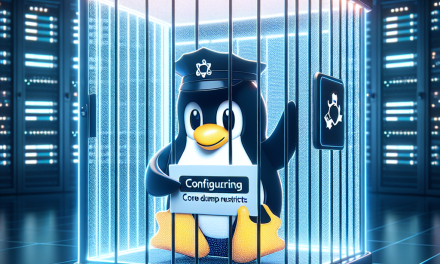In today’s high-performance computing environments, ensuring efficient resource utilization is critical for maximizing application performance. One effective method of resource management is CPU thread isolation, which can limit the number of threads that an application utilizes on specific CPU cores. This article will provide a step-by-step guide to configuring CPU thread isolation on Linux servers to enhance performance.
Understanding CPU Thread Isolation
CPU thread isolation is a technique that involves dedicating specific CPU cores for certain tasks or applications. By isolating critical workloads onto designated cores, you minimize context switching and cache thrashing, leading to improved performance. This is particularly beneficial in environments running real-time applications, databases, or containerized workloads.
Benefits of CPU Thread Isolation
-
Reduced Latency: Minimizing context switching among threads can lead to lower latency for time-sensitive applications.
-
Increased Predictability: Isolating CPU resources leads to more predictable application behavior, which is crucial for real-time systems.
-
Enhanced Performance: By concentrating resources, applications can operate more efficiently, leading to performance gains.
Prerequisites
Before diving into configuration, ensure you have:
- A Linux server with appropriate permissions (root access).
- Basic familiarity with Linux terminal commands.
- Necessary tools and packages installed, depending on your Linux distribution.
Step-by-Step Guide to Configuring CPU Thread Isolation
Step 1: Identify CPU Cores
First, identify the available CPU cores on your system. You can achieve this using the following command:
bash
lscpu
This command will display core information, including the architecture, the number of CPUs, and their status.
Step 2: Isolate CPU Cores
To isolate certain CPU cores, you need to modify the Linux kernel parameters. You can do this by editing the GRUB configuration file typically located at /etc/default/grub.
-
Open the file in a text editor (replace
nanowith your preferred editor):bash
sudo nano /etc/default/grub -
Find the line starting with
GRUB_CMDLINE_LINUX_DEFAULTand addisolcpus=<your_core_numbers>to it. For example, if you want to isolate cores 2 and 3, your line would look something like this:bash
GRUB_CMDLINE_LINUX_DEFAULT=”… isolcpus=2,3″ -
Save the file and update GRUB with:
bash
sudo update-grub -
Reboot your server to apply the changes:
bash
sudo reboot
Step 3: Pin Applications to Isolated Cores
Once you have isolated the CPU cores, the next step is to pin your applications to these cores. You can do this using the taskset command, which allows you to set or retrieve the CPU affinity of a running process.
-
To start a new process on specific cores:
bash
taskset -c 2,3This command starts
<your_application>and restricts it to cores 2 and 3. -
To change the affinity of a running process:
First, find the PID (Process ID) of the running application:
bash
ps aux | grepNext, set the CPU affinity:
bash
taskset -p -c 2,3
Step 4: Monitor Performance
After configuring the CPU thread isolation and pinning applications, it’s essential to monitor performance to validate improvements. You can use tools like htop, mpstat, or perf to analyze CPU usage and performance metrics.
Install htop if you haven’t already:
bash
sudo apt install htop
Run htop in your terminal:
bash
htop
You can observe the CPU usage and verify that the isolated cores are functioning as intended.
Considerations
-
Balancing Load: While isolating cores can boost performance for certain workloads, ensure that the overall system load is well-balanced for optimal performance.
-
Testing: Always test configurations in a development environment before applying them to production systems.
-
Kernel Version: The commands and configurations may vary slightly depending on your Linux distribution and the kernel version. Always refer to your distribution’s documentation for specific instructions.
Conclusion
Configuring CPU thread isolation on Linux servers can significantly enhance application performance, especially in resource-intensive environments. By effectively managing CPU resources, you can achieve lower latency, improved predictability, and overall optimized performance. As workloads evolve, revisiting and adjusting CPU thread isolation settings will continue to be a crucial aspect of system optimization.
Feel free to reach out or comment if you have any questions or need further assistance with thread isolation on your Linux servers!





